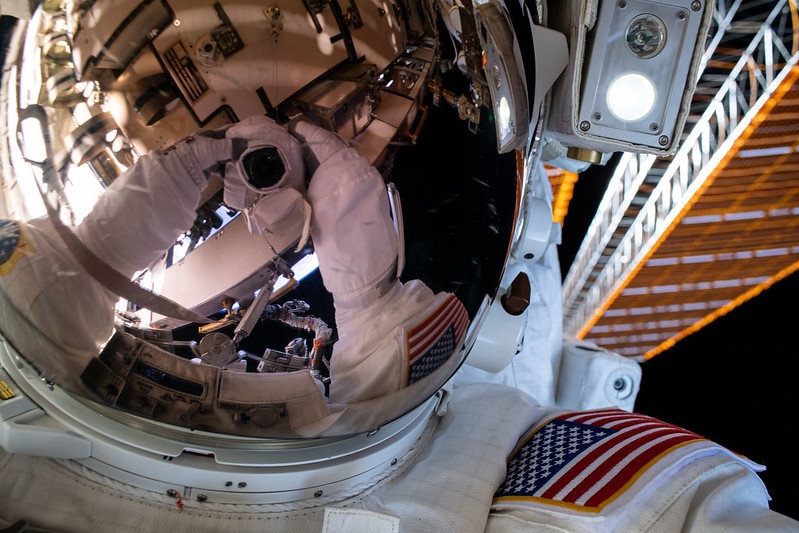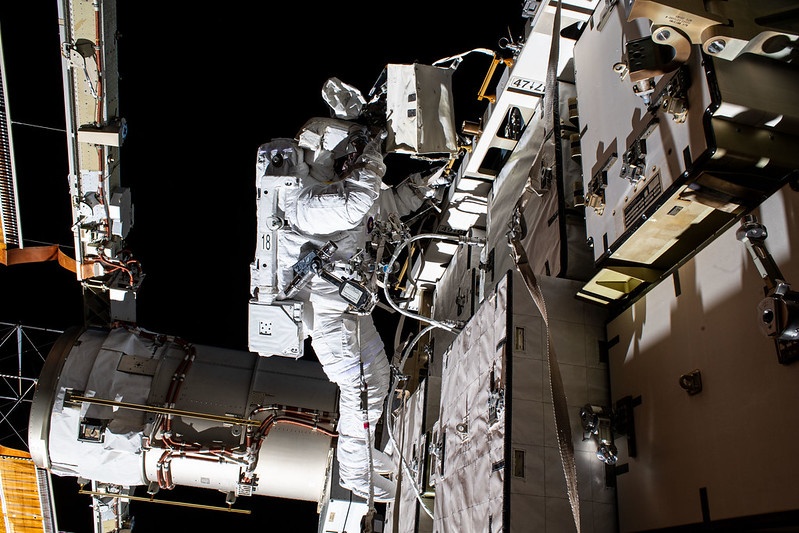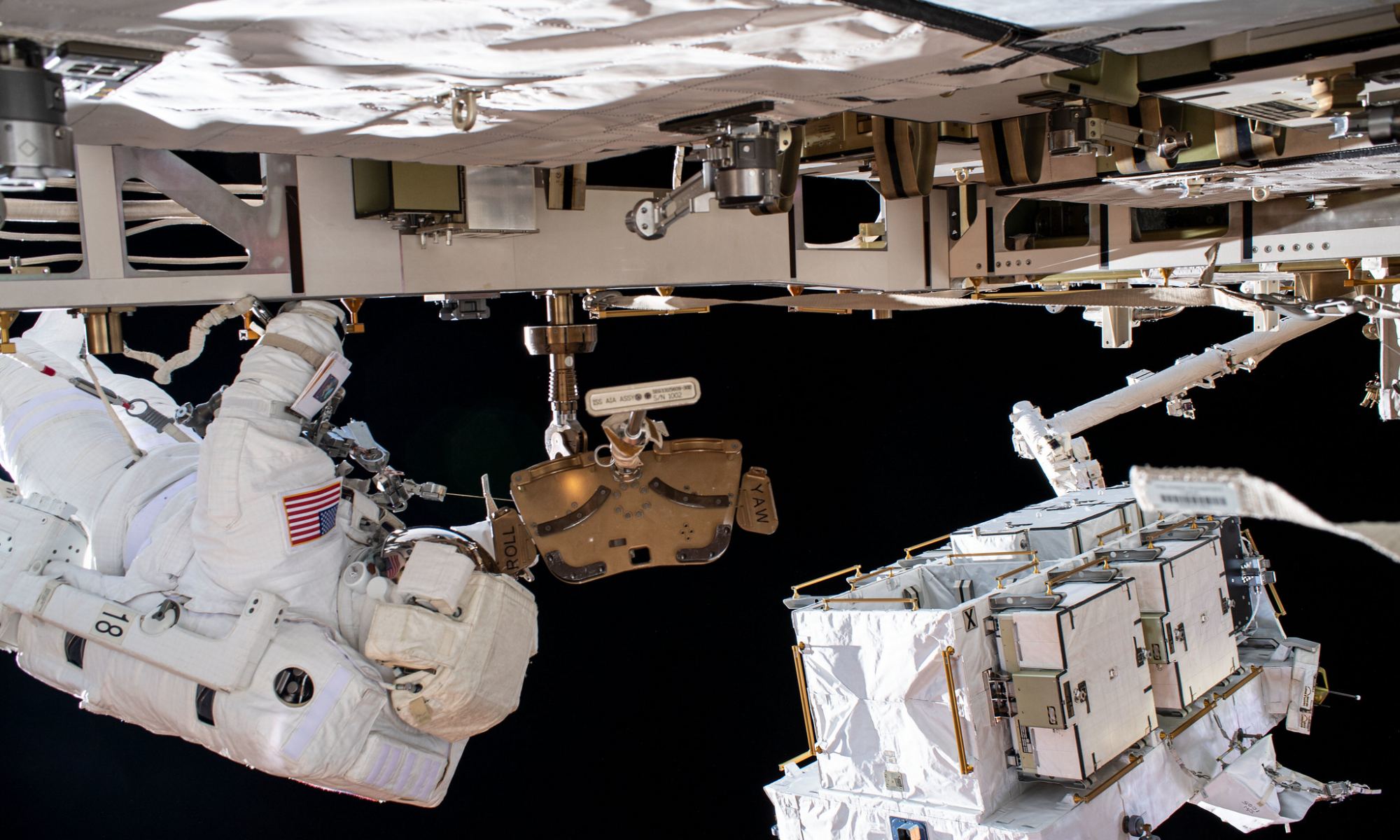Oops.
Dropping a mirror on Earth is only minor cause for concern, perhaps about the potential of some upcoming bad luck. Dropping a mirror while on a spacewalk means creating a potentially dangerous new piece of space junk, all while thousands of people watch it happen, streaming live.
A small mirror came loose from International Space Station Commander Chris Cassidy’s spacesuit at the start of a spacewalk on June 26, 2020.
The mirror floated away right after Cassidy emerged from the ISS in orbital darkness to begin a six-hour EVA to upgrade power systems on the station’s exterior. Spacewalking astronauts have mirrors on each sleeve to get better views while working, since the spacesuit helmets limit the field of view. The mirror is just 5-by-3 inches (7-by-12 centimeters), and according the Associated Press, together with its band has a mass of barely one-tenth of a pound (50 grams).
Cassidy inspected his spacesuit sleeve later while in sunlight but didn’t see any clues that might explain why the mirror came off. NASA said later that the lost item posed no risk to either the spacewalk or the ISS.

NASA lists more than 20,000 pieces of debris larger than a softball orbiting the Earth. There are 500,000 pieces of debris the size of a marble or larger and there are many millions of pieces of debris that are so small they can’t be tracked. All these pieces – whether intact satellites or parts of satellites or rockets are traveling at speeds up to 17,500 mph, which is fast enough for even a relatively small piece of orbital debris to damage a satellite or a spacecraft. Tiny paint flecks can damage a spacecraft when traveling at these velocities. In fact, a number of space shuttle windows needed to be replaced because of damage caused by material that was analyzed and shown to be paint flecks.
“The greatest risk to space missions comes from non-trackable debris,” said Nicholas Johnson, NASA chief scientist for orbital debris.
Space junk continues to be a problem without a definite solution. There have been designs for space nets, harpoons or vacuums to gather up small debris. But some say the most effective way to solve the space junk problem is an international agreement to charge operators “orbital-use fees” for every satellite put into orbit. No word on possible “user fees” for any items lost during a spacewalk.

Cassidy and astronaut Bob Behnken conducted the first of four spacewalks to work on upgrading the station’s power system. Last Friday, the veteran spacewalkers spent six hours and 7 minutes swapping out five aging nickel-hydrogen (NiH2) batteries with two new lithium-ion (Li-Ion) batteries. They will go out again on Wednesday, July 1 starting at 7:20 a.m. EDT to swap one more NiH2 battery for a Li-Ion battery on the Starboard-6 truss structure.
Space station managers also are planning two more spacewalks in July to continue the battery upgrades.


¿How difficult would it be to set up a rigid light maneuverable frame with a net around work areas up on the ISS?
Once assembled it’s structure could be left set up for future use on demand by parking it somewhere out of the way on the outside. Whenever external works are to be carried out this structure could be dragged and fixed into position for the length of the operation. A camera could also be fitted to the structure allowing for another video angle to facilitate the works and for public viewing on an otherwise visually obstructed panorama.
Perhaps all objects sent into Earth’s orbit with a potential for becoming space junk should be given a reflective coating so, as with a light sail, be able to bring them down back to Earth or push into outer space with ease using lasers. So called space brooms (link given below) have already been proposed but these are Earth based systems of space junk orbital deflection. I wonder if an orbiting satellite space laser positioned at a safe angle to avoid hitting anything on Earth might have less of a chance of a miss?
https://en.wikipedia.org/wiki/Laser_broom